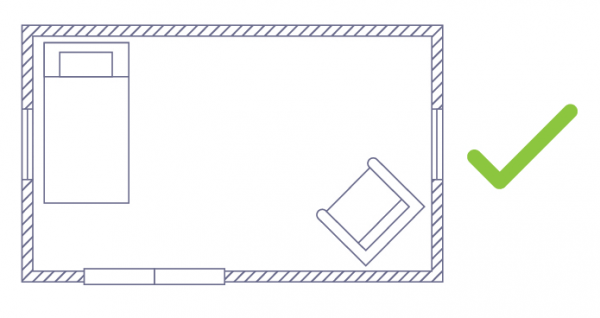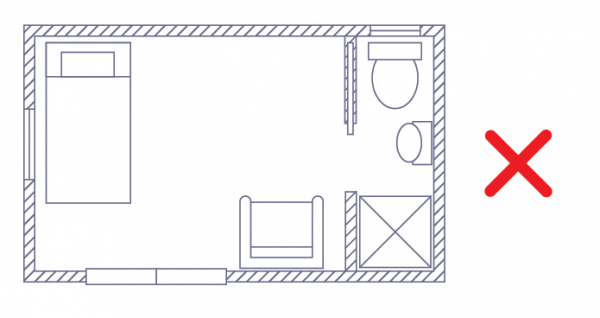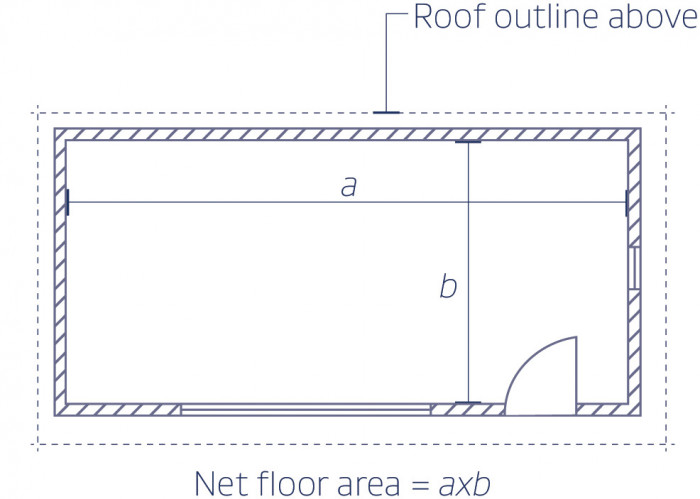Notes for single-storey detached buildings: 2.1-2.5
Sections 2.1-2.5 cover five separate exemptions for single-storey detached buildings. Before you begin your project, there are several things you need to consider.
Sections 2.1-2.5 cover five separate exemptions for single-storey detached buildings.
- Buildings not exceeding 10 square metres in floor area
- Single-storey detached buildings exceeding 10, but not exceeding 30 square metres in floor area, constructed of lightweight materials
- Buildings exceeding 10, but not exceeding 30 square metres in floor area using a kitset or prefabricated building where a manufacturer or supplier has had the design carried out or reviewed by a Chartered Professional Engineer
- Buildings not exceeding 30 square metres in floor area where a Licensed Building Practitioner is to carry out or supervise design and construction.
- Unoccupied detached buildings
Constructing a sleepout that does not require building consent
MBIE and BRANZ have collaborated to produce a new guide, Constructing a sleepout that does not require building consent. It helps homeowners see if they need advice from a building professional or employ a building professional to do the work for them.
Constructing a sleepout that does not require building consent - guide [PDF 9.1MB]
This guide covers the building consent exemption for designing and constructing a single-storey detached sleepout with a 10–30 m2 floor area, which is built with lightweight materials. The example could be adapted for use with some other types of small buildings that are covered below and by the exemption in Part 3, Schedule 1 of the Building Act.
Before you begin your project, you need to consider the following:
District planning
Always check with your local council to make sure your proposed building work does not have any district or regional planning implications taking consideration of maximum site coverage, yard or setback requirements, daylight access planes or permitted activities. A resource consent may be required and it is important that this is obtained before starting any building work.
Plumbing
Any buildings that include bathroom facilities cannot be built using these exemptions. A building consent is required.


Durability
The Building Code requires building materials, components and construction methods to be sufficiently durable to ensure the building (without reconstruction or major renovation) satisfies the other functional requirements of the Building Code for the life of the building.
Smoke alarms
You must install smoke alarms if the detached building is going to be used for sleeping. Please refer to Acceptable Solution F7/AS1 for more information on the location and type of smoke alarms to install. It is recommended that any smoke alarm in a sleepout is interconnected with the smoke alarms in the main dwelling.
Compliance Document for New Zealand Building Code Clause F7 Warning Systems [PDF 400KB] which includes Acceptable Solution F7/AS1
Stormwater
You need to consider the Building Code requirements regarding the disposal of stormwater from the roof of your building. You should seek professional guidance and seek approval from your council. All new drains must be laid by an authorised drainlayer.
On-site waste water disposal systems
If the building is intended to be a sleepout in connection with an existing dwelling, and the waste water from the existing dwelling discharges to an on-site waste water disposal system (i.e. a septic tank), you need to check that the existing waste water disposal system has the capacity for the extra persons.
Location of services
You need to confirm the location of any underground services that could affect the location of the build. Check with your local council and an underground services location company to ensure you are not building over any existing below ground services, such as drains, electricity, gas, telecommunications etc
Building close to boundaries
If you are building close to boundaries, you need to consider the Building Code requirements regarding protection from fire, particularly in relation to the external spread of fire to neighbouring property.

Measuring the net floor area
The net floor area in a building is measured to the inside of the enclosing walls or posts/columns.

Note for manufacturers of prefabricated buildings
If you are a supplier or manufacturer of proprietary garden sheds, greenhouses, cabins or sleepouts, we recommend that you make sure anyone buying them is aware of the how the small building is to be used and located in order to be exempt from needing a building consent. If a small building is not used or located as required by the exemption, the purchaser will need to apply for a building consent.